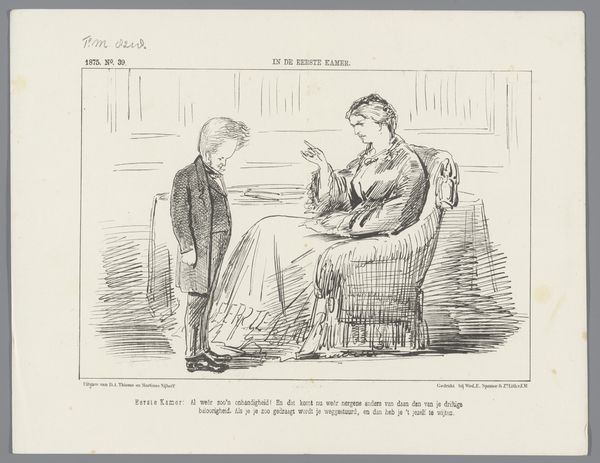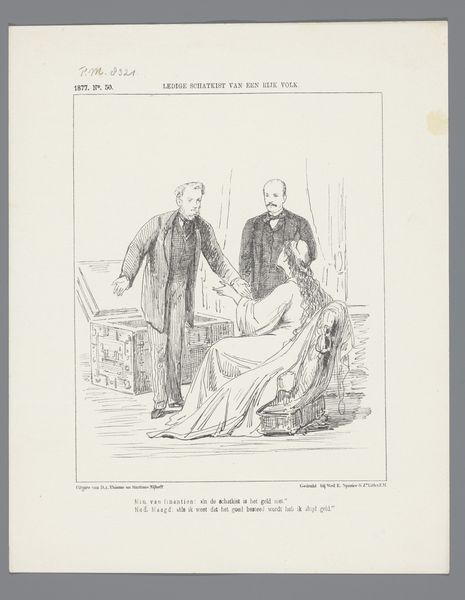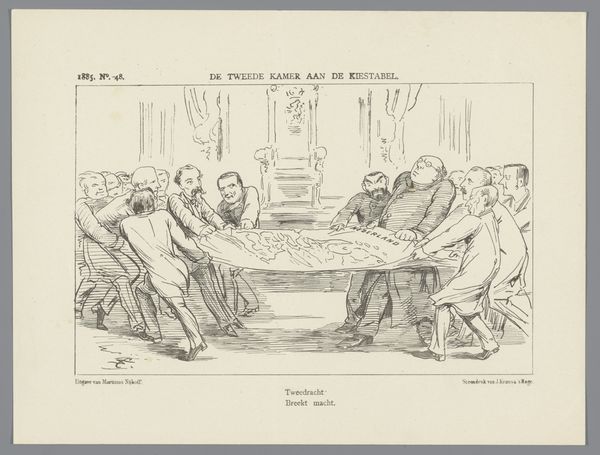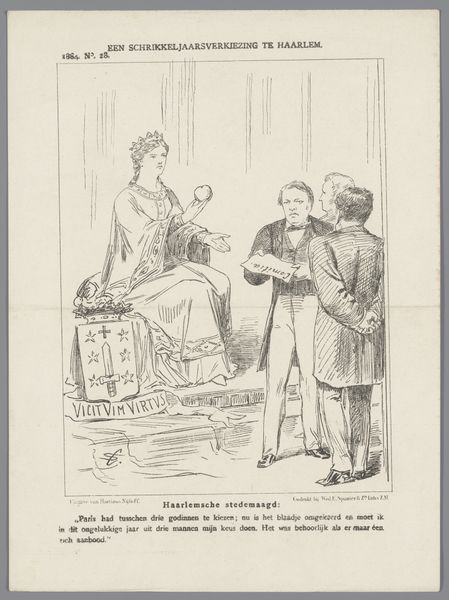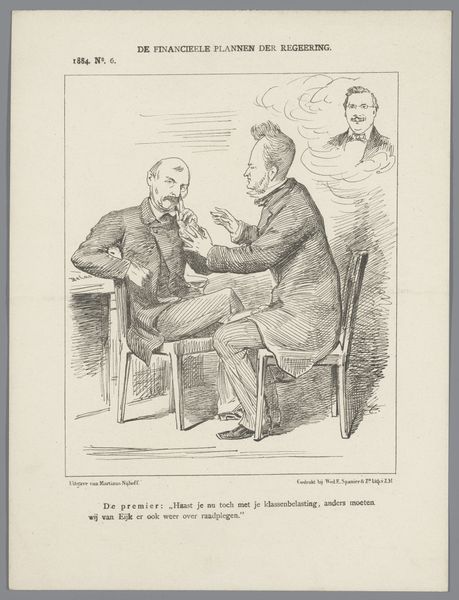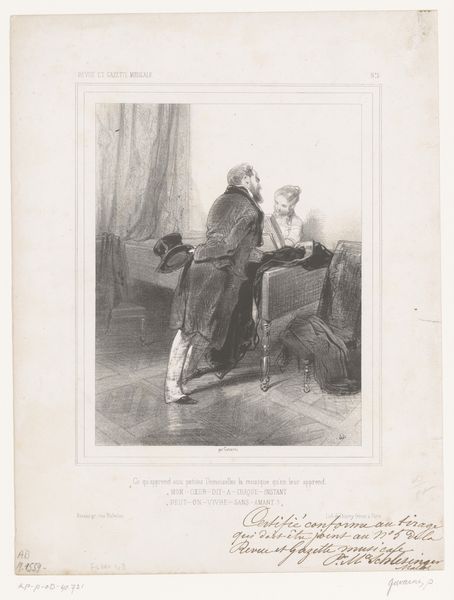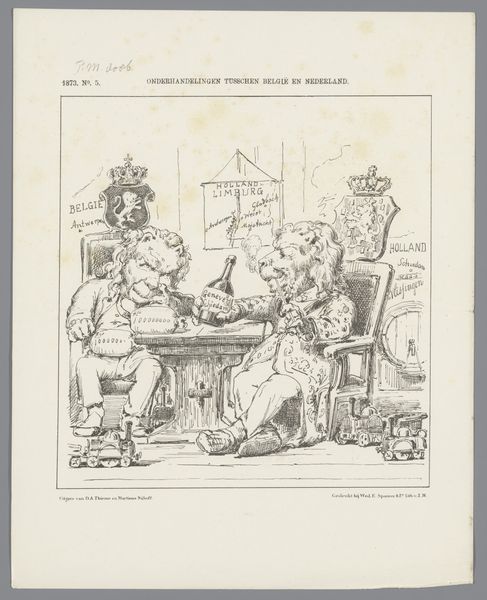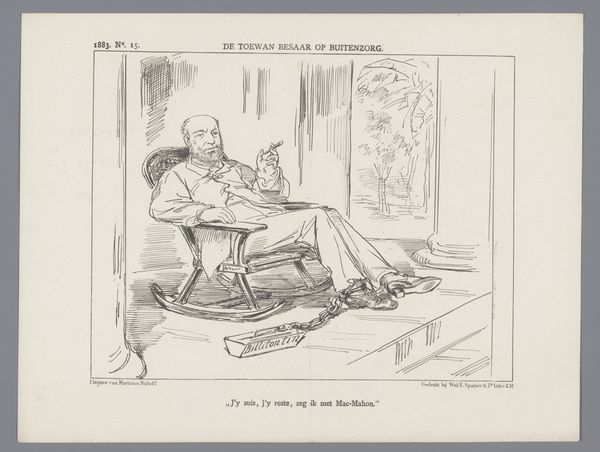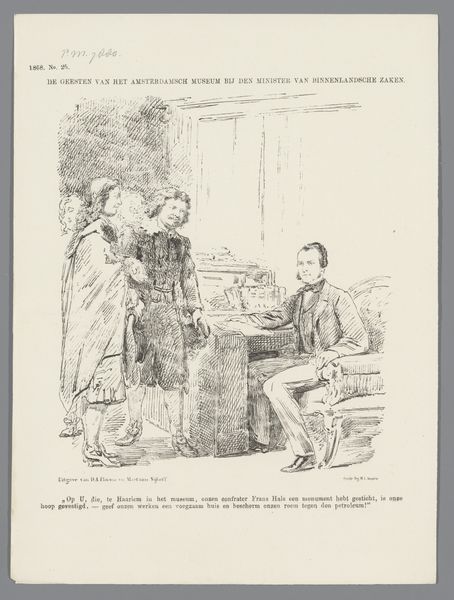
drawing, print, paper, ink
#
drawing
#
narrative-art
# print
#
caricature
#
paper
#
ink
#
genre-painting
#
modernism
Dimensions: height 215 mm, width 275 mm
Copyright: Rijks Museum: Open Domain
Curator: This is a caricature print dating from 1887, titled "Spotprent over de grondwetsherziening, 1887," made by Johan Michaël Schmidt Crans using ink on paper. The question posed, roughly translated, asks, "Will the constitutional amendment come about?" Editor: The scene seems quiet, almost domestic, yet there's an underlying tension, perhaps bordering on the absurd. I find myself focusing on the layering of space within the drawing, and the body language of the figures. The ink seems hastily applied. Curator: Indeed. Look closely at how Schmidt Crans employs the hatching technique to delineate form and shadow. Notice the sheer volume of paper on the table in the scene; this draws attention to the materiality of governance – the physical labor involved in bureaucracy, debate, and amendment. What stories could each sheet tell us? Editor: And consider who this print was aimed at. Was this meant to inform, to persuade, or perhaps to simply offer a space for communal commiseration in a moment of perceived political gridlock? It also brings up questions of labor and representation: who is producing the news, and who benefits from its dissemination? Whose stories are omitted? Curator: Absolutely, the conditions of production are implicit. The means through which opinions regarding legislation could be formulated or molded... what was at stake in this specific political moment, how did one access information? Even the style, a quickly disseminated print, speaks to different forms of reception. The scale and availability, the very real labour of printing versus reading – who is afforded each of these? Editor: The composition leads the eye in various directions, almost trapping you within the scene itself. It definitely underscores how political reform deeply intersects with questions of class, access to information, and dominant narratives. The idea that ‘progress’ is never neutral and always carries societal baggage that effects power relations. Curator: Considering these material dimensions helps us not only to situate the work historically, but to really challenge notions surrounding artistic mediums and artistic labor. Editor: Understanding historical contexts illuminates the print's continued relevance today. Curator: It reminds us to investigate our own present conditions as critical actors engaged in the making of history. Editor: Absolutely. A moment captured reminding us we always exist in media res.
Comments
No comments
Be the first to comment and join the conversation on the ultimate creative platform.

